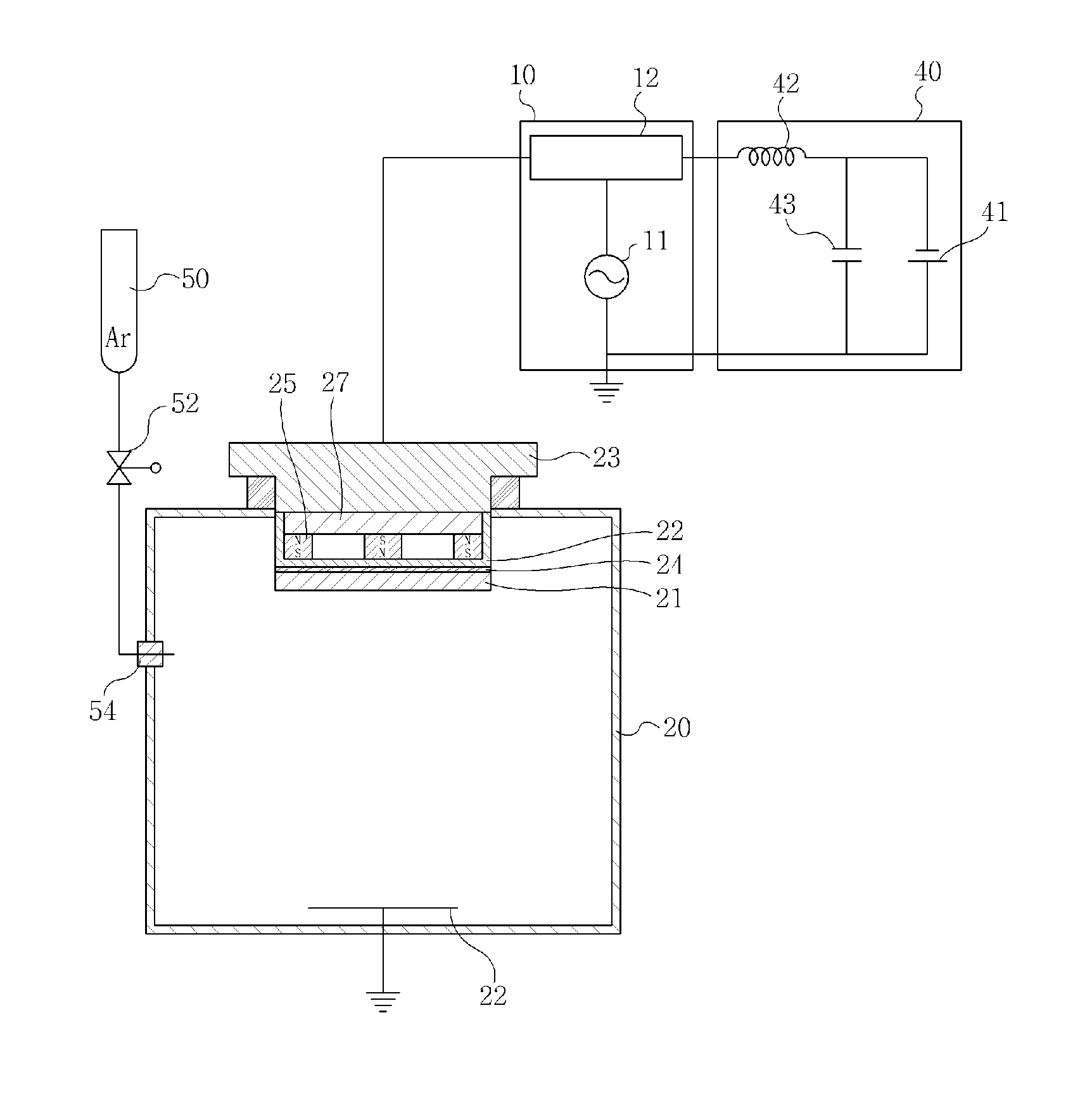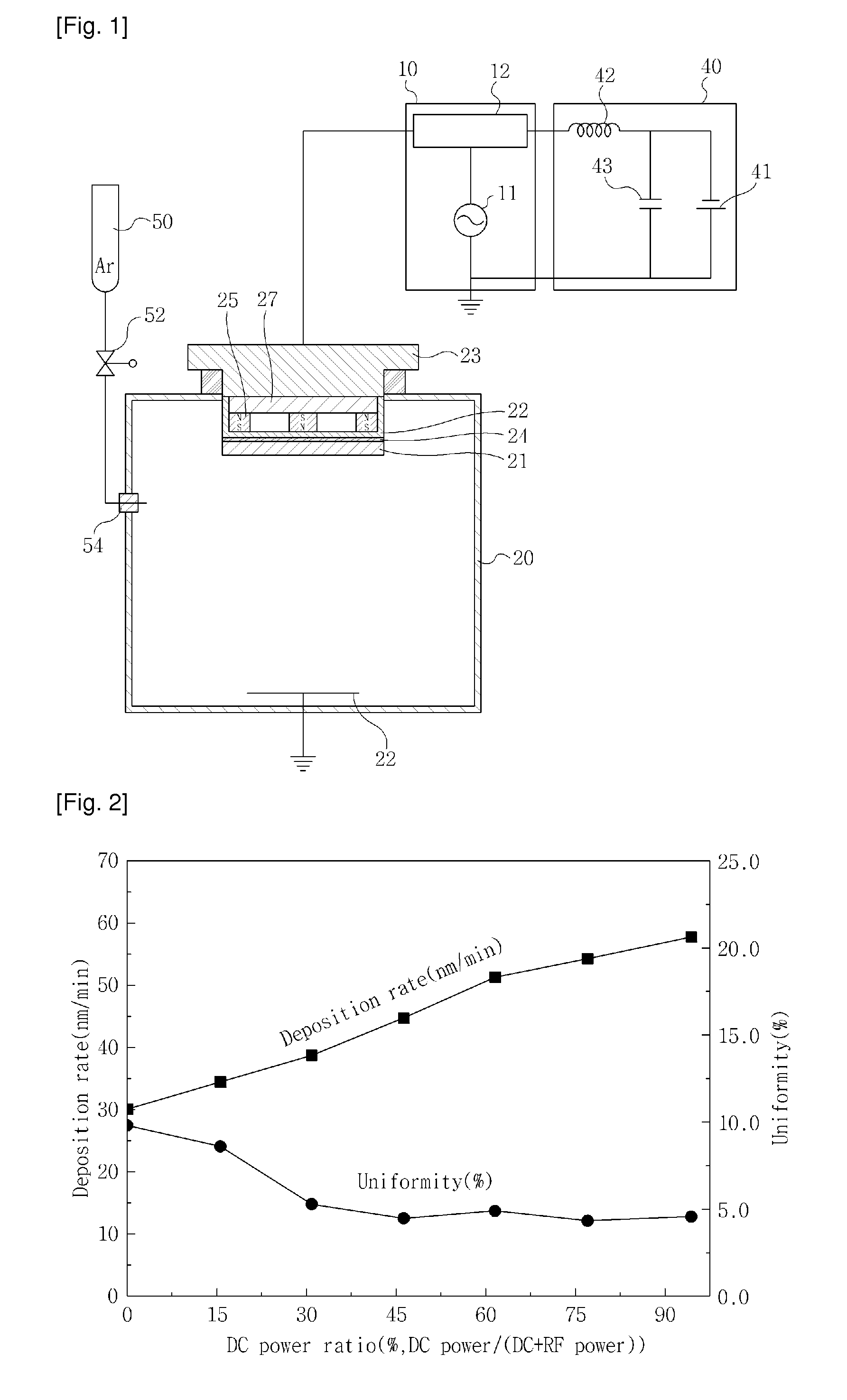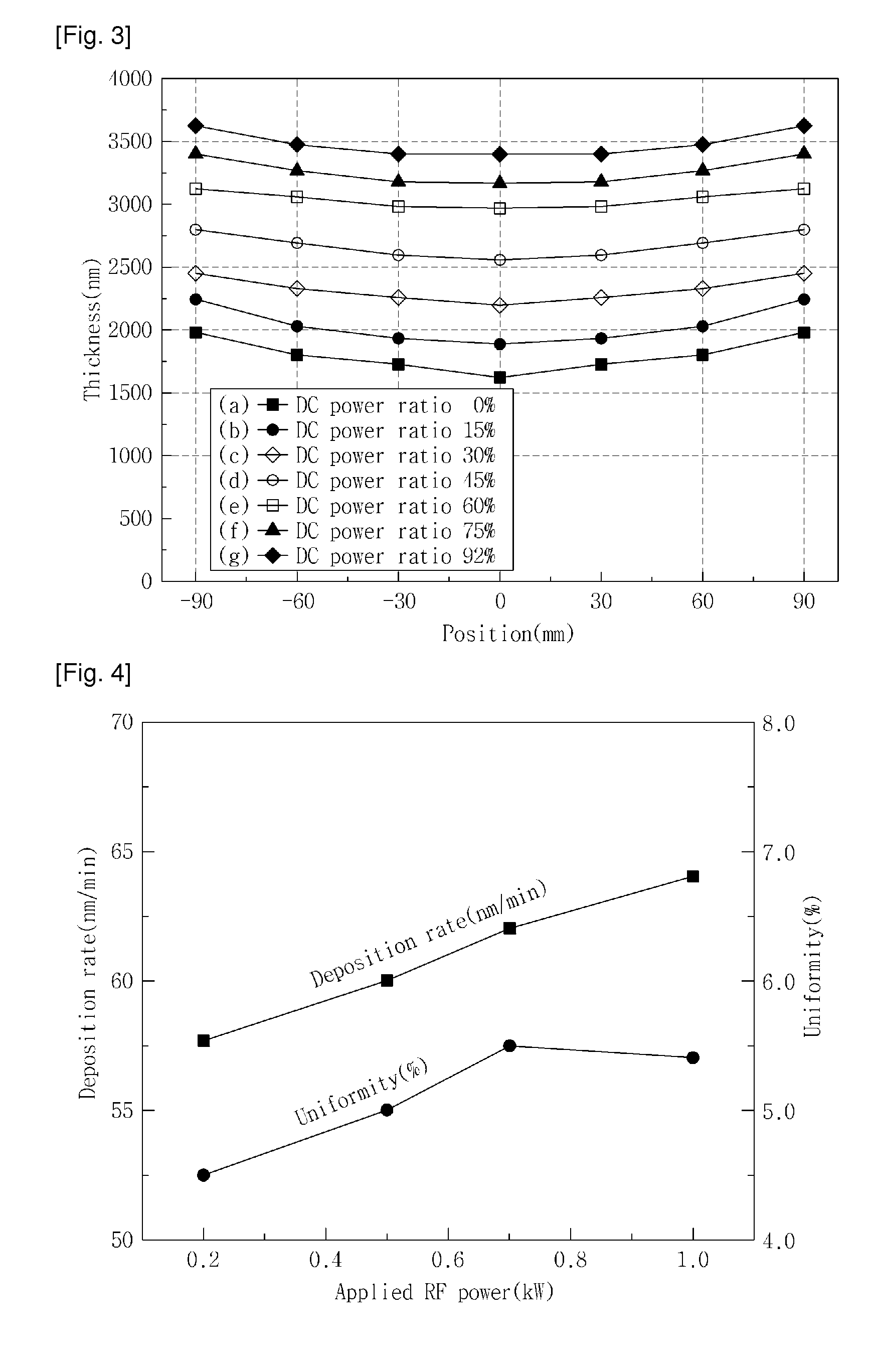Method for depositing ceramic thin film by sputtering using non-conductive target
a ceramic thin film and target technology, applied in the field of ceramic thin film sputtering with a non-conductive target, can solve the problems of poor battery yield, difference in deposition rate, processing speed and precision recall not meeting the commercialization requirement, etc., to improve the uniformity of deposited thin film, reduce the processing time, and low power
- Summary
- Abstract
- Description
- Claims
- Application Information
AI Technical Summary
Benefits of technology
Problems solved by technology
Method used
Image
Examples
Embodiment Construction
[0033]Hereinafter, preferred embodiments of the present invention will be described in detail with reference to the accompanying drawings.
[0034]After the inventors have dedicated much efforts to developing a technique for increasing deposition rate that is regarded as the biggest problem in the conventional RF sputtering process on a nonconductive target, they learned that the sputtering deposition rate of a thin film could be increased when an AC / RF power is first applied to a nonconductive target to form plasma within a chamber and then a hybrid power in combination of an AC / RF power and a DC power is applied to the target, such that the applied DC power from a hybrid power supply is used as power for sputtering the plasma in the chamber after all. Another unexpected fact the inventors have discovered that even the uniformity of the deposited thin film got improved by the new technique, compared to that of the deposited thin film done by the conventional sputtering.
[0035]Under suc...
PUM
| Property | Measurement | Unit |
|---|---|---|
| Fraction | aaaaa | aaaaa |
| Power | aaaaa | aaaaa |
| Composition | aaaaa | aaaaa |
Abstract
Description
Claims
Application Information
 Login to View More
Login to View More - R&D
- Intellectual Property
- Life Sciences
- Materials
- Tech Scout
- Unparalleled Data Quality
- Higher Quality Content
- 60% Fewer Hallucinations
Browse by: Latest US Patents, China's latest patents, Technical Efficacy Thesaurus, Application Domain, Technology Topic, Popular Technical Reports.
© 2025 PatSnap. All rights reserved.Legal|Privacy policy|Modern Slavery Act Transparency Statement|Sitemap|About US| Contact US: help@patsnap.com



